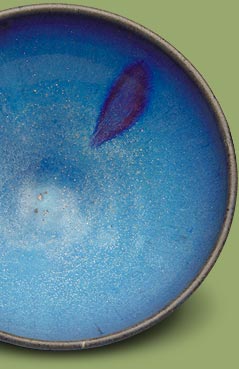Fate
/ I would say my fate has been good, even princely perhaps. Most people don't want to believe in fate. They figure only silly people and Asians believe in fate. What is fate?
I would say my fate has been good, even princely perhaps. Most people don't want to believe in fate. They figure only silly people and Asians believe in fate. What is fate?First of all I should point out that there are Daoist Precepts against predicting the future, and if that wasn't enough to convince you, there is a precept against making a living from fortune telling.
Let's start from what everybody has, a body. The body we get at birth is fate. Yes it may make a difference if your mother ate a lot of rocky-road ice cream during her pregnancy, but there are still some basic parameters that will determine your body type. True, it matters to some degree what we eat over 20 or 30 years. But we don't actually have direct control of our appetite.
Appetite is a key concept in understanding how fate relates to martial arts. Everybody gets hungry, everybody has an appetite, just like everybody gets angry, everybody has aggression that can explode.
Part of growing up is a process of refining our appetites. It's a touchy thing we don't have direct control over, but you can make yourself sick of even the most tasty dish by eating it every night for a week. Imagine how bad tuna casserole would be after eating it six times in a row. Likewise, if you deprive yourself of chocolate for a couple of months and then accidentally bump into a friend eating a bar of Scharfenberger's.... They'll be lucky if they get to keep half.
If you have a wide range of food choices and you understand the different qi qualities of those foods and how to combine them, you can really start to play with your appetite. The qi quality of a particular food refers to the categories of foods which have a similar effect on your body and your appetite. So cabbage and kale are pretty similar while chocolate is in a category by itself (Yes, I agree that carob is good, but it is not chocolate).
The body we have is pretty much fate. But it is a kind of flexible fate. Meaning it is unlikely that I'm ever going to have long sharp teeth, but if tattoos got old and teeth sharpening became like the new hip urban craze, I could at least sharpen my teeth. We do have some control over what we want to eat, but a lot of it is fate. If you are Polish and you haven't had black bread and sausage in like a year, just me saying this is going to make you jones for it. Polynesians and pineapple, Norwegians and lutefisk.
Martial arts work the same way. You have a body that wants certain kinds of movement, it wants certain kinds of stillness too. It's like an appetite. If you have a wide range of training options and you understand how they will effect your body, you can play with that. What you do everyday will actually change what your body wants. A great deal of it is just fate, but there is also room to play around.
Where we live, the kind of gongfu we practice, the languages we speak, what we eat for breakfast--as humans we have some flexibility up to a point, and no doubt you can move to a foreign country, learn a new language and forsake you grandmothers recipe toffee, but most of us, most of the time, have a fate, a rhythm, a set of patterns that make us feel comfortable.


 I've been reading the book
I've been reading the book  had a new competition. This created a really competitive environment where everyone was making imperial quality work, but only one "kiln" was getting to sell it to the royal family so there was literally tons of extraordinary art work floating around. This milieu created the worlds first antique markets.
had a new competition. This created a really competitive environment where everyone was making imperial quality work, but only one "kiln" was getting to sell it to the royal family so there was literally tons of extraordinary art work floating around. This milieu created the worlds first antique markets.
 Wow, it was fun putting those three names together.
Wow, it was fun putting those three names together. Wilhelm Reich
Wilhelm Reich Reich is also extraordinary because he was probably the first to say that Nazi's and Communists are the same. His reason was also way ahead of his time: They both used the same repressive physicality to perpetuate fear of self-awareness; a fear which makes people want to be told what to do.
Reich is also extraordinary because he was probably the first to say that Nazi's and Communists are the same. His reason was also way ahead of his time: They both used the same repressive physicality to perpetuate fear of self-awareness; a fear which makes people want to be told what to do. Katherine Dunham
Katherine Dunham  Here is an article from
Here is an article from  I've been looking for information on Daoist ritual shoes. I was sure that somewhere I'd seen special Daoist ritual shoes which are 3 inch high stilts. These shoes make it impossible to put weight on the toes or the heel since the stilt post goes down from the center of the foot. Since the base the the stilt is thicker at the bottom, kind of like a mushroom, there is a plenty of space to balance. The problem is I have been unable to find these shoes (so no picture). Did I dream them? How embarrassing.
I've been looking for information on Daoist ritual shoes. I was sure that somewhere I'd seen special Daoist ritual shoes which are 3 inch high stilts. These shoes make it impossible to put weight on the toes or the heel since the stilt post goes down from the center of the foot. Since the base the the stilt is thicker at the bottom, kind of like a mushroom, there is a plenty of space to balance. The problem is I have been unable to find these shoes (so no picture). Did I dream them? How embarrassing. Dream or not, these shoes represent ultimate shamanic power. The symbolic steps Daoists take in ritual cover huge distances. They circumambulate the empire, the world, and they traverse the distances between stars in the sky.
Dream or not, these shoes represent ultimate shamanic power. The symbolic steps Daoists take in ritual cover huge distances. They circumambulate the empire, the world, and they traverse the distances between stars in the sky.
 There are many Tianshi lineages but there is one individual in each generation who is the central Tianshi. This person comes from a continuous family lineage going back to Zhang Daoling. During the Dynastic eras of China the Tianshi had a palace at Dragon Tiger Mountain (Longhushan). To get a sense of the importance of the Tianshi it helps to understand that all building and construction in China has always been regulated by the government. No building was allowed to be built larger than the Emperor’s palace. We get a sense of how important the Tianshi was by noting that the Tianshi’s palace was specifically built (roughly) six feet smaller than the Imperial Palace. Needless to say, the role of Tianshi was central to the religious life of the country and the functioning of the state, and because of this, the Tianshi is sometimes called the Daoist Pope.
There are many Tianshi lineages but there is one individual in each generation who is the central Tianshi. This person comes from a continuous family lineage going back to Zhang Daoling. During the Dynastic eras of China the Tianshi had a palace at Dragon Tiger Mountain (Longhushan). To get a sense of the importance of the Tianshi it helps to understand that all building and construction in China has always been regulated by the government. No building was allowed to be built larger than the Emperor’s palace. We get a sense of how important the Tianshi was by noting that the Tianshi’s palace was specifically built (roughly) six feet smaller than the Imperial Palace. Needless to say, the role of Tianshi was central to the religious life of the country and the functioning of the state, and because of this, the Tianshi is sometimes called the Daoist Pope. In Japanese, which uses Chinese written characters, Dao becomes "do," in many familiar arts like Karatedo, Judo, Aikido, Budo (the warrior code), and Chado (the art of tea).
In Japanese, which uses Chinese written characters, Dao becomes "do," in many familiar arts like Karatedo, Judo, Aikido, Budo (the warrior code), and Chado (the art of tea).